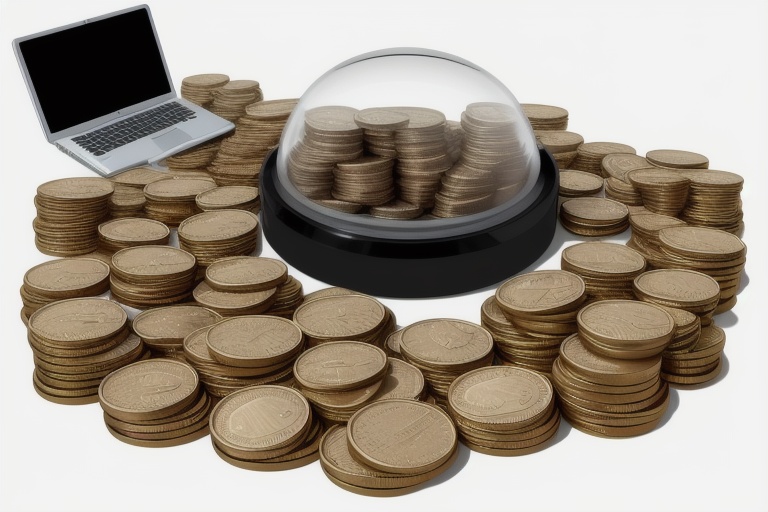The 50 pence coin, often referred to as the 50p, occupies a vaunted position in the United Kingdom's rich numismatic history. With its distinctive seven-sided design and often significant commemorative themes, the 50p coin stands out both as a piece of everyday currency and as a collector's artifact. Its intriguing journey from concept to circulation is worth exploration.
The 50 pence coin, often referred to as the 50p, occupies a vaunted position in the United Kingdom's rich numismatic history. With its distinctive seven-sided design and often significant commemorative themes, the 50p coin stands out both as a piece of everyday currency and as a collector's artifact. Its intriguing journey from concept to circulation is worth exploration.
Origins and Design of the 50p Coin
While new collectors and aficionados alike may recognize its current form, the 50p coin's origins can be traced to the late 1960s. The 50p coin originally made its debut in October 1969, marking a shift toward decimal coinage in the UK. This change simplified transactions and the broader monetary system. The coin arrived alongside its smaller siblings, the 5p and 10p coins, effectively replacing the ten-shilling note.
The coin's reverse – colloquially known as the "tails" side – historically celebrates Britannia, the enduring emblematic figure of British national identity, who has graced UK coinage since the 17th century. The original 50p design melded tradition with innovation, showcasing Britannia seated with a shield and trident. Complementing this image, an edge of equal sides formed an equilateral curve heptagon, a design shift that made the coin easily distinguishable by touch and suitable for automated sorting and vending machines.
As the largest circulating coin following the introduction of smaller 5p and 10p coins in the 1990s, the physical size of the 50p piece necessitated reassessment. The result came in 1994 when the government decreed a reduced version which debuted in September 1997, leading to the demonetizing of the original larger coin the following year.
Commemorations and Collections
The utility of the 50p coin found a parallel in its role as a commemorative token. The Royal Mint, situated at the crux of monetary circulation and cultural memory, released a multitude of special designs on the 50p coin. Each coin often captures a slice of national heritage or significant contemporary achievement, such as the 50th Anniversary of the D-Day Landings, the establishment of the National Health Service (NHS), or the landmark 2012 London Olympic Games.
Esteemed designers have contributed their talents to the 50p's visual narrative. Christopher Ironside, the architect of the initial coin designs from 1969 until an update in 1982, ensured Britannia was rendered with a combination of stateliness and maritime vigor. The words "FIFTY PENCE" were incorporated, offering a concise and functional elegance. Later, Matthew Dent championed the British Royal Arms, illustrating the shield's constituent parts across the coin's reverse in a harmonious design.
Beyond national borders, the coin has commemorated the UK's engagement with international communities. This commemorative palette includes, for instance, the 1973 piece dedicated to the UK's accession to the European Economic Community.
A Collector's Essential: The 50p Coin
The 50p coin's function extends into the realm of the hobbyist. For coin collectors, novice or seasoned, the variety of 50p coins – both circulating and those specifically minted for collectors – offers an opportunity to delve into a tangible record of the UK's historical and cultural milestones.
The 50p is not just valued for its monetary worth but also for its tangible connection to events and shifts within the sociopolitical landscape. Each new release from the Royal Mint is met with anticipation and excitement, as collectors vie to add these special editions to their assemblies.
Broadening Horizons in Coin Collecting
As we expand our focus beyond the British isles, coin collecting and valuation reach into a world brimming with historical richness and intriguing variety. Coins, as artifacts, offer windows into different eras, reflecting the geopolitical, social, and economic currents of their times. Stories told through metal alloys and engravers' artistry beckon us further into the immersive world of numismatics.
The allure of the 50p coin – in its various iterations and ceremonial forms – is emblematic of this larger tableau. To engage with coin collecting is to weave through a tapestry of narratives and themes, carved upon these small yet profound canvases. As we explore this diverse ecosystem, we enter a dialogue with the past and with fellow collectors, sharing the reverence for these metallic pieces of heritage.
Whether as an investment or as cultural enrichment, the venture into coin collecting affirms that each denomination, design, and epoch has its place in the broader narrative. Stay tuned, for our journey through the realm of numismatics stretches onward, promising more discoveries, insights, and treasures for those who pursue the path.
Information for this article was gathered from the following source.




